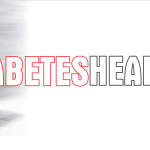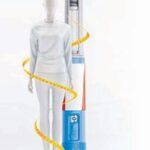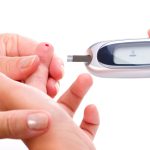Awareness and knowledge can help prevent health complications. Education plays an important role in informing people about the condition and how best to manage it through a healthy diet, regular exercise and necessary medication. This holds especially true for Diabetes which is a chronic condition caused by high blood sugar levels.
The 6th International Diabetes Summit (Virtual) – 2022 organised by Chellaram Diabetes Institute, Pune was one such attempt to make an impact in the field of Diabetes. The three-day summit witnessed numerous national and international dignitaries connect virtually and speak on the latest findings, techniques and technologies in the field of Diabetes – from clinical management to patient care, from the current challenges to the latest innovations in the world of Diabetes.
Following are some of the topics discussed during the three-day summit:
 n
n
Non-Diabetes hypoglycaemia
Dr Pankaj Shah (Endocrinologist at the Mayo Clinic, USA) spoke about diagnosing non-Diabetes hypoglycaemia (very low blood sugar level).
Hypoglycaemia (very low blood sugar levels) is life- threatening, if left untreated. Fasting and certain medications can cause very low blood sugar levels in people who do not have Diabetes. Insulin is responsible for lowering blood sugar levels. If insulin is being secreted, then insulin action will be seen i.e. lowered blood sugar levels. Certain tests can help measure insulin levels in the body. Determining if insulin production is causing hypoglycaemia (as can occur rarely with insulin producing tumours) is important as treatment is determined accordingly.
 n
n
Automating insulin therapy
Prof. Ohad Cohen (Clinical Professor of Medicine, Institute of Endocrinology, Sheba Medical Center, Tel-Aviv, Israel) discussed automating insulin therapy to improve patient care.
Insulin is a hormone produced by the beta cells in the islets of pancreas. When food enters in the body, the glucose released from it deposits in the blood. The beta cells in the pancreas are signalled to release insulin (the key) for the cells (the lock) to take in the glucose. Insulin helps to push the glucose from the blood into the cells so it could be used for energy. Deficiency of insulin (in Type 1 Diabetes) or decreased responsiveness of insulin (in Type 2 Diabetes) causes high blood sugar levels in the blood.
Insulin pump is a good option, especially for people with Type 1 Diabetes, as it eliminates five times per day of insulin injection pricks. It is a pager-like device that injects insulin 24 hours a day. A small motor pushes the piston which delivers insulin through a tube to an area under the skin. This tube has to be changed in every three days. Advanced models also have the facility of wireless connection with glucose monitoring device, which predicts the hypoglycaemia trends in people. The ultimate goal is to eliminate the need of injecting insulin from outside and restoring the ability of pancreas to secrete insulin. Closed loop insulin delivery system, also known as artificial pancreas, is being explored currently and hopefully soon will become the future of insulin therapy.
 n
n
Are HbA1c and time in range sufficient?
Professor Roger Mazze (Principal author of AGP and Director of the AGP Clinical Academy, USA) spoke about continuous glucose management glucose exposure and variability: are HbA1c and time in range sufficient?
Continuous blood glucose monitoring (CGM) to pinpoint the frequency of blood sugar highs and lows while performing everyday activities at work and home. CGM also improves understanding of how certain foods, exercise and medications affect blood sugar levels. The HbA1c is a blood test which gives average blood sugars of past 3 months. If done every 4 to 6 months it gives information regarding the blood sugar control and indicates if the person with Diabetes have been regularly taking medicines. Time in range shows the percentage of time that an individual has spent with normal blood sugar levels. Guidelines state that at least 70 per cent of the blood sugar readings should be within range, and not more than 4 per cent of the blood glucose levels should be below range. Even a 5 -10 5-10 per cent increase in the time spent in normal range can translate into meaningful improvements in risk of kidney disease or diabetic eye disease. Time in range is interpreted along with the time below range, this test would reflect low blood sugar too (unlike the HbA1c test).
Professor Mazze stressed that HbA1c helped asses overall clinical outcomes in terms of risk of complications. Time in range proved helpful to focus on frequency, duration, magnitude and distribution of blood sugar fluctuations. Both of these tests together helped identify priorities of healthcare and provided guidance for selection of medication required.
For more information, visit: www.cdidiabetessummit.org














